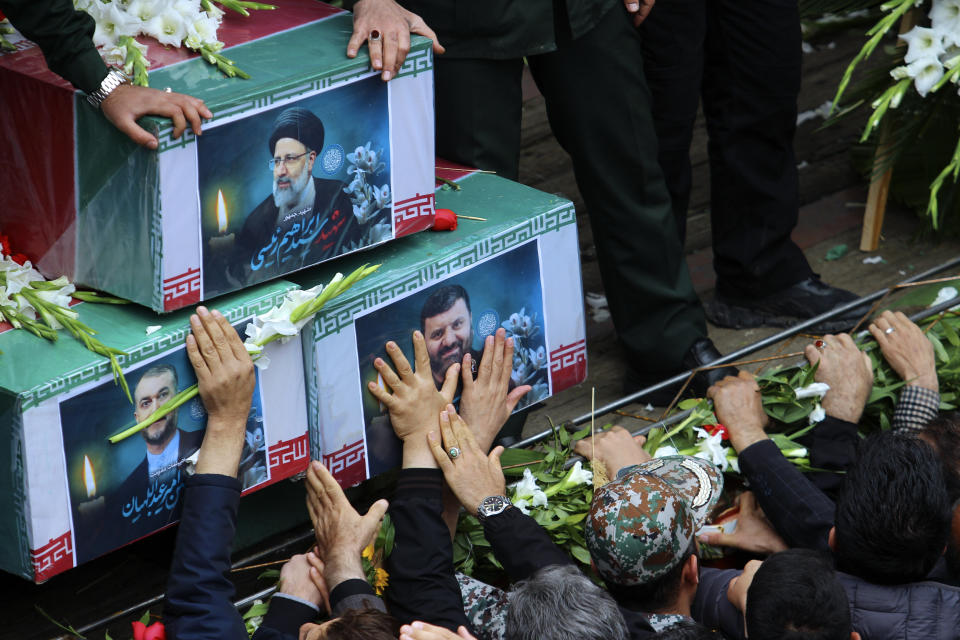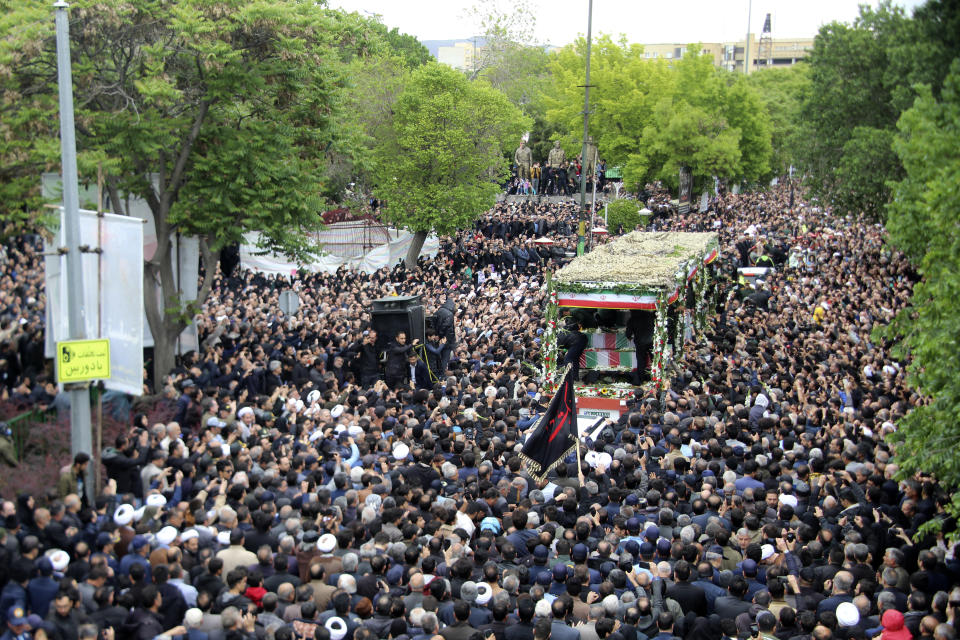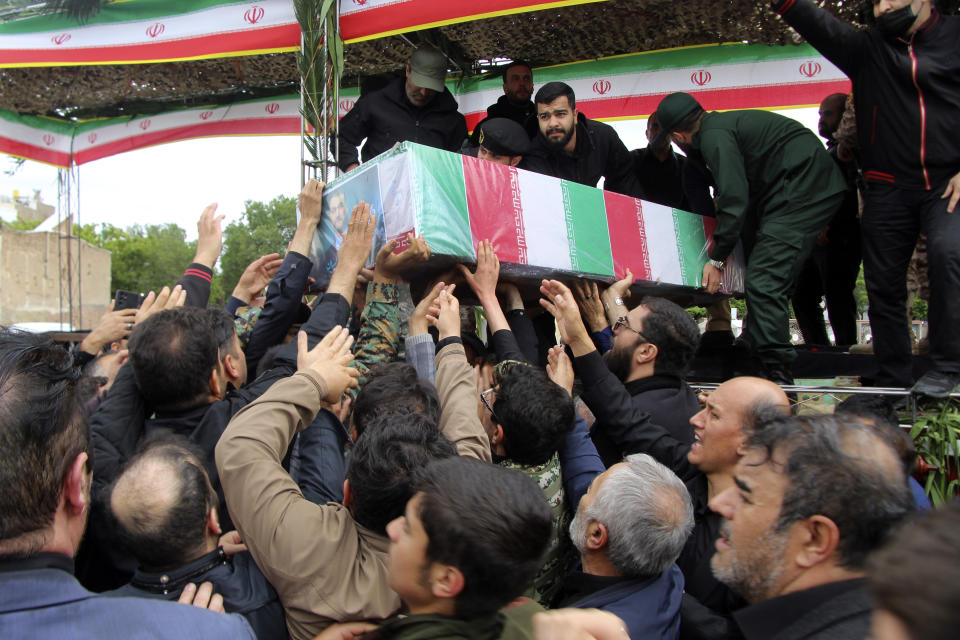Analysis: Iran's nuclear policy of pressure and talks likely to go on even after president's death
- Oops!Something went wrong.Please try again later.
- Oops!Something went wrong.Please try again later.
- Oops!Something went wrong.Please try again later.
- Oops!Something went wrong.Please try again later.
DUBAI, United Arab Emirates (AP) — While Iran's nuclear program stands at the precipice of tipping over into enriching uranium at weapons-grade levels, Tehran has held quiet, indirect talks with the United States and invited the head of the United Nations' atomic watchdog into the country for negotiations.
While seemingly contradictory, the move follows Iran's strategy since the collapse of its nuclear deal with world powers after then-President Donald Trump unilaterally withdrew America from the accord in 2018. Tehran is attempting to exert its own version of Trump's “maximum pressure” on the international community to see the economic sanctions that have crippled the country's economy and currency lifted in exchange for slowing down its program.
The Islamic Republic also appears to be trying to contain the risk it faces from the U.S. after launching an unprecedented attack on Israel amid its war on Hamas in the Gaza Strip. The assault — a response to a suspected Israeli strike on April 1 which killed two Guard generals and others in Damascus, Syria — has pushed a yearslong shadow war between Israel and Tehran out into the open.
All this is unlikely to change for the time being, even with the helicopter crash Sunday that killed Iranian President Ebrahim Raisi, Foreign Minister Hossein Amirabdollahian and other officials on a foggy mountain. That's largely due to the fact that all matters of state rest with Supreme Leader Ayatollah Ali Khamenei.
Khamenei, 85, has led Iran since 1989 as only its second supreme leader since the country's Islamic Revolution. Under Khamenei, Iran has seesawed between subtle outreach to outright hostility with the U.S. and other Western powers.
Those cycles include reformist President Mohammad Khatami's “ Dialogue Among Civilizations ” efforts that hit a wall as the U.S. suffered the Sept. 11 attacks in 2001 and soon began its decadeslong wars in Afghanistan and Iraq. Hard-line President Mahmoud Ahmadinejad — who came to power in 2005 — cheered the country's nuclear program and defied the West. Relatively moderate President Hassan Rouhani ultimately got the 2015 nuclear deal across the line, ending sanctions for greatly limiting its atomic program.
Then came the U.S. withdrawal from the nuclear deal. Iran in the waning days of the Rouhani administration began a series of attacks targeting shipping in the Middle East while dialing down its cooperation with the International Atomic Energy Agency, the U.N.'s watchdog. It ultimately began enriching uranium up to 60% purity — a step away from weapons-grade levels of 90%.
Then Raisi, a protégé of Khamenei, won the 2021 presidential election in a vote that saw his main rivals barred from running and a record-low turnout for the race. Those policies continued — as did Iran's support for regional militias like Yemen's Houthi rebels, now attacking ships moving through the Red Sea over the Israel-Hamas war. Those groups have long provided Iran with a means to challenge its regional archenemy Israel, as well as the U.S., without a direct military confrontation.
Through all of this turmoil, the one constant has been Khamenei. As the supreme leader, he's further empowered the country's Revolutionary Guard, whose all-volunteer Basij forces have been crucial in putting down widespread protests that have struck the nation in recent years. And by ensuring Raisi's election, he narrowed the country's political field to only hard-liners who have embraced that policy of pressure.
The Israel-Hamas war, as well as the risk of it expanding into a regional confrontation, has changed some of this calculus, however. The survival of the “nezam,” or “system” as Iran's Shiite theocracy is known, remains the paramount concern. The risk of open warfare, as well as the economic pressure squeezing Iran and its people, have made efforts to try to restart the diplomacy — or at least alleviate the risk of things getting even worse — that much more important.
The late Amirabdollahian, as well as the country's now-acting Foreign Minister Ali Bagheri Kani, had been fierce critics of the negotiations as run under the Rouhani administration. But in the time since, they moved to reach a détente with Saudi Arabia last year. Then they've continued indirect talks with the U.S. in Oman, a sultanate on the eastern edge of the Arabian Peninsula that's been a key interlocutor between Tehran and the West.
The full extent of the talks remains unclear, as does what will come from them. However, Iran even reached out to the U.S. government after the helicopter crash for assistance, State Department spokesman Matthew Miller told journalists Monday.
“We did make clear to them that we would offer assistance, as we would do in response to any request by a foreign government in this sort of situation," he said. "Ultimately, largely for logistical reasons, we weren’t able to provide that assistance.”
That help was finding the crash site, The Washington Post reported. And such an ask wouldn't have come without Khamenei's approval.
___
EDITOR’S NOTE — Jon Gambrell, the news director for the Gulf and Iran for The Associated Press, has reported from each of the Gulf Cooperation Council countries, Iran and other locations across the world since joining the AP in 2006.



